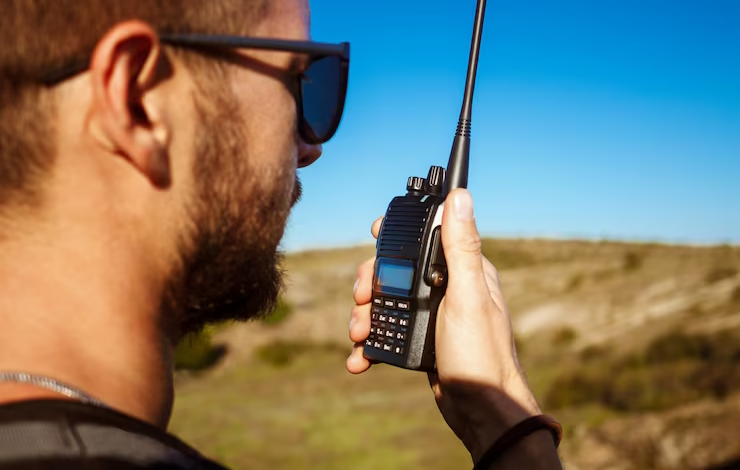Why is niles ohio police still on analog radios

When you think of police communication, you might picture high-tech digital systems, encrypted channels, and sleek devices buzzing with real-time data. Yet, in Niles, Ohio, a small city in Trumbull County, the police department continues to rely on analog radios for their day-to-day operations. This choice might seem outdated in an era of rapid technological advancement, but there are compelling reasons behind it. From cost considerations to reliability in rural landscapes, the decision to stick with analog radios is rooted in practicality, history, and local needs. As someone who’s spent years tuning into police scanners as a hobby and studying communication systems, I’ve seen firsthand how these choices impact communities like Niles. Let’s dive into why the Niles Police Department hasn’t fully embraced digital and what this means for the city’s safety and residents.
The Basics of Analog Radios
To understand why Niles, Ohio, police still use analog radios, let’s start with what analog radios are. Analog radios transmit voice signals using frequency modulation (FM) or amplitude modulation (AM). Unlike digital radios, which convert voices into data packets, analog systems send continuous sound waves. This makes them simpler but also more susceptible to interference like static or background noise. For decades, analog radios have been the backbone of public safety communications, valued for their reliability and straightforward operation.
In Niles, the police operate on frequencies like 153.665 MHz for dispatch, as noted in public scanner feeds. These analog channels are part of a conventional FM system, which contrasts with the digital Project 25 (P25) systems adopted by many larger departments. Analog’s simplicity means officers can communicate instantly without worrying about digital lag or complex setups, which is critical in emergencies.
Why Analog Persists in Niles
1. Cost-Effectiveness for a Small Department
Niles, Ohio, is a city of about 18,000 residents, with a police department that’s modest in size compared to urban giants like Cleveland or Columbus. Switching to a digital radio system, such as P25 Phase II, involves significant costs—new radios, infrastructure upgrades, and ongoing maintenance. For a smaller department, this can be a budget-buster. A single digital radio can cost $1,000 or more, and a full system overhaul could run into millions. Analog radios, on the other hand, are cheaper to maintain, and existing equipment can often be repurposed or repaired.
From my experience monitoring scanner communities, small departments like Niles often stick with analog because their current systems “just work.” Replacing functional equipment with expensive digital alternatives isn’t always justified when budgets are tight, especially in a city facing economic challenges like Niles, which has seen industrial decline since its steel mill heyday.
2. Reliability in Rural and Urban Mix
Niles sits in a region that blends urban and rural landscapes. While the city itself is compact, Trumbull County includes areas with spotty cell service and challenging terrain. Analog radios, particularly those operating in the VHF or UHF bands (like Niles’ 153-154 MHz range), are less affected by physical barriers like buildings or hills compared to cell phones or some digital systems. They rely on repeaters to extend range, which Niles has used effectively for decades.
I recall a stormy night a few years back when I was listening to my old Uniden scanner. A power outage had knocked out cell towers in a nearby county, but the local police’s analog radios kept humming, relaying calls about downed trees and accidents. This reliability is a key reason Niles hasn’t rushed to digital, which can falter in areas with poor infrastructure or during natural disasters when networks get congested.
3. Interoperability with Neighboring Agencies
Public safety communication often requires coordination with nearby agencies, like fire departments, EMS, or sheriff’s offices. In Trumbull County, many of these agencies still use analog systems or maintain analog as a backup. For example, Niles’ fire dispatch operates on 154.190 MHz, another analog frequency. Switching to digital could create interoperability issues unless all agencies upgrade simultaneously—a logistical and financial hurdle.
When I was part of a local radio enthusiast group, we often discussed how analog systems allow seamless communication during mutual aid scenarios, like when Niles police assist Warren or Howland Township. Digital systems, especially encrypted ones, can complicate this unless everyone’s on the same platform, which isn’t always the case in Ohio’s patchwork of small jurisdictions.
4. Public Access and Transparency
One unique aspect of analog radios is their accessibility to the public. Unlike encrypted digital systems, analog frequencies can be monitored by anyone with a scanner, fostering transparency. In Niles, residents can tune into 153.665 MHz to hear police dispatch, which builds trust and keeps the community informed about local incidents. This is particularly valuable for journalists, neighborhood watch groups, or hobbyists like me who use scanners to stay aware of what’s happening.
However, this openness has a downside. Criminals can also listen in, potentially compromising officer safety. In larger cities, this has driven the shift to encrypted digital systems, as seen in places like Louisville or Denver. Niles, with its lower crime rate compared to urban centers, may not feel the same urgency to encrypt, especially since analog’s public nature aligns with community policing values.
5. Resistance to Change and Legacy Systems
Police departments, like any organization, can be slow to adopt new technology, especially when existing systems are reliable. Niles’ analog radios, some of which may date back decades, are likely Motorola models like the XTS series, known for their durability. These radios are built to last, and departments often “hand down” older units to new officers or keep them as backups. I’ve seen posts on forums like RadioReference where users note that Niles’ analog frequencies have been in use since at least the 1970s, a testament to their staying power.
There’s also a human factor. Officers trained on analog systems may resist learning complex digital interfaces, especially in a department with limited resources for retraining. As someone who’s fiddled with both analog and digital scanners, I can attest that analog is more intuitive—you flip a switch, hear the chatter, and you’re set. Digital systems often require programming or updates, which can be a hassle for a small force.
The Push for Digital: Why Niles Hasn’t Made the Leap
Across the U.S., many police departments are moving to digital systems like P25, which offer clearer audio, encryption, and data capabilities (e.g., text messaging or GPS). Cities like Rockford, Illinois, adopted Motorola’s StarCom21 system to eliminate “dead zones” and improve clarity. So why hasn’t Niles followed suit? Beyond cost and reliability, there are a few other factors at play.
Limited Crime Threats
Niles isn’t a hotbed of high-stakes crime like major cities. While it faces issues like theft or drug-related incidents, the need for encrypted communications to thwart criminals eavesdropping isn’t as pressing. In larger cities, departments cite active shooter scenarios or organized crime as reasons for encryption. Niles’ lower-risk environment means analog’s vulnerabilities are less of a concern.
Community Size and Needs
With a population under 20,000, Niles doesn’t require the complex communication networks of a metropolis. A few analog channels suffice for coordinating patrols, responding to calls, and dispatching EMS or fire. Larger systems like StarCom21 are overkill for a city of Niles’ size, where officers often know each other and the community personally.
Budget and Grant Dependency
Upgrading to digital often depends on federal or state grants, like the $1.9 million Rockford received for StarCom21. Niles may not have secured such funding, and local taxpayers might balk at footing the bill. As a scanner enthusiast, I’ve seen small departments delay upgrades for years, waiting for grants or surplus equipment from larger agencies.
The Downsides of Sticking with Analog
While analog radios serve Niles well, they’re not without drawbacks. Here are a few challenges:
-
Interference and Clarity: Analog signals can pick up static or cross-talk, especially in busy radio environments. Digital systems offer clearer audio, which can be critical during chaotic incidents.
-
Lack of Encryption: Analog’s open nature means anyone with a $50 scanner can listen in, including potential criminals. This raises safety concerns, though Niles mitigates this with careful radio discipline.
-
Aging Technology: Analog systems are becoming obsolete. Manufacturers like Motorola are phasing out support for older models, and parts are harder to find. Niles may eventually be forced to upgrade as equipment fails.
-
Limited Features: Digital radios support data transmission, like sending suspect descriptions or GPS coordinates. Analog is voice-only, which limits its utility in modern policing.
I’ve experienced analog’s limitations myself. On my scanner, Niles’ police channel sometimes gets drowned out by nearby frequencies, especially during bad weather. Digital systems, while not perfect, handle interference better and offer features that could enhance officer efficiency.
What the Future Holds for Niles
Will Niles stay analog forever? Probably not. The trend toward digital is strong, driven by federal mandates and industry shifts. The Federal Communications Commission (FCC) has pushed for narrowbanding, which encourages digital adoption to free up spectrum. Niles may already be exploring digital options, as nearby agencies like Warren have adopted P25 systems.
However, any transition will likely be gradual. Niles could adopt a hybrid approach, using digital for sensitive operations and keeping analog for public-facing dispatch. This balances cost, transparency, and security. Alternatively, they might join a regional digital network like Ohio’s MARCS (Multi-Agency Radio Communication System), though this requires significant investment.
From my perspective, having followed scanner communities and local policing trends, Niles’ analog system is a pragmatic choice for now. It reflects the city’s size, budget, and operational needs. But as technology evolves and funding becomes available, a shift to digital seems inevitable—perhaps within the next decade.
Community Impact and Public Perception
The use of analog radios affects more than just police operations; it shapes how residents interact with law enforcement. For scanner listeners in Niles, analog means real-time access to police activity, which can be both empowering and concerning. On one hand, it keeps the community informed about incidents like accidents or break-ins. On the other, it raises privacy issues for victims whose details might be broadcast openly.
As a hobbyist, I’ve found that listening to Niles’ police channel gives a sense of connection to the community. You hear the human side of policing—officers joking during quiet shifts or coordinating help for a stranded motorist. But I also understand why some argue for encryption, especially to protect sensitive information. Niles’ choice to stay analog suggests they value this transparency, at least for now.
Lessons from Other Communities
Other small departments offer clues about Niles’ approach. In Southfield, Michigan, police moved to encrypted digital systems, citing officer safety, but their fire department stayed analog for public access. In contrast, some Ohio counties, like Richland, have fully encrypted their sheriff’s dispatch, cutting off public listening. Niles’ middle ground—analog with no encryption—reflects a balance that works for its community but may not last as regional pressures mount.
Conclusion: A Practical Choice for Now
The Niles, Ohio, Police Department’s reliance on analog radios isn’t a refusal to modernize but a calculated decision based on cost, reliability, and community needs. Analog systems are affordable, dependable in Trumbull County’s mixed terrain, and compatible with neighboring agencies. They also foster transparency, letting residents stay informed via scanners. While digital systems offer advantages like encryption and clearer audio, the barriers to adoption—cost, training, and infrastructure—are significant for a small city.
As someone who’s spent countless hours with a scanner, I appreciate Niles’ analog system for its simplicity and accessibility. Yet, I also see the writing on the wall: digital is the future, and Niles will likely transition as budgets and technology align. For now, those crackling analog transmissions on 153.665 MHz remain a lifeline for officers and a window into policing for the community. Whether you’re a resident, a scanner enthusiast, or just curious, Niles’ choice to stick with analog is a reminder that sometimes, the old ways still get the job done.



